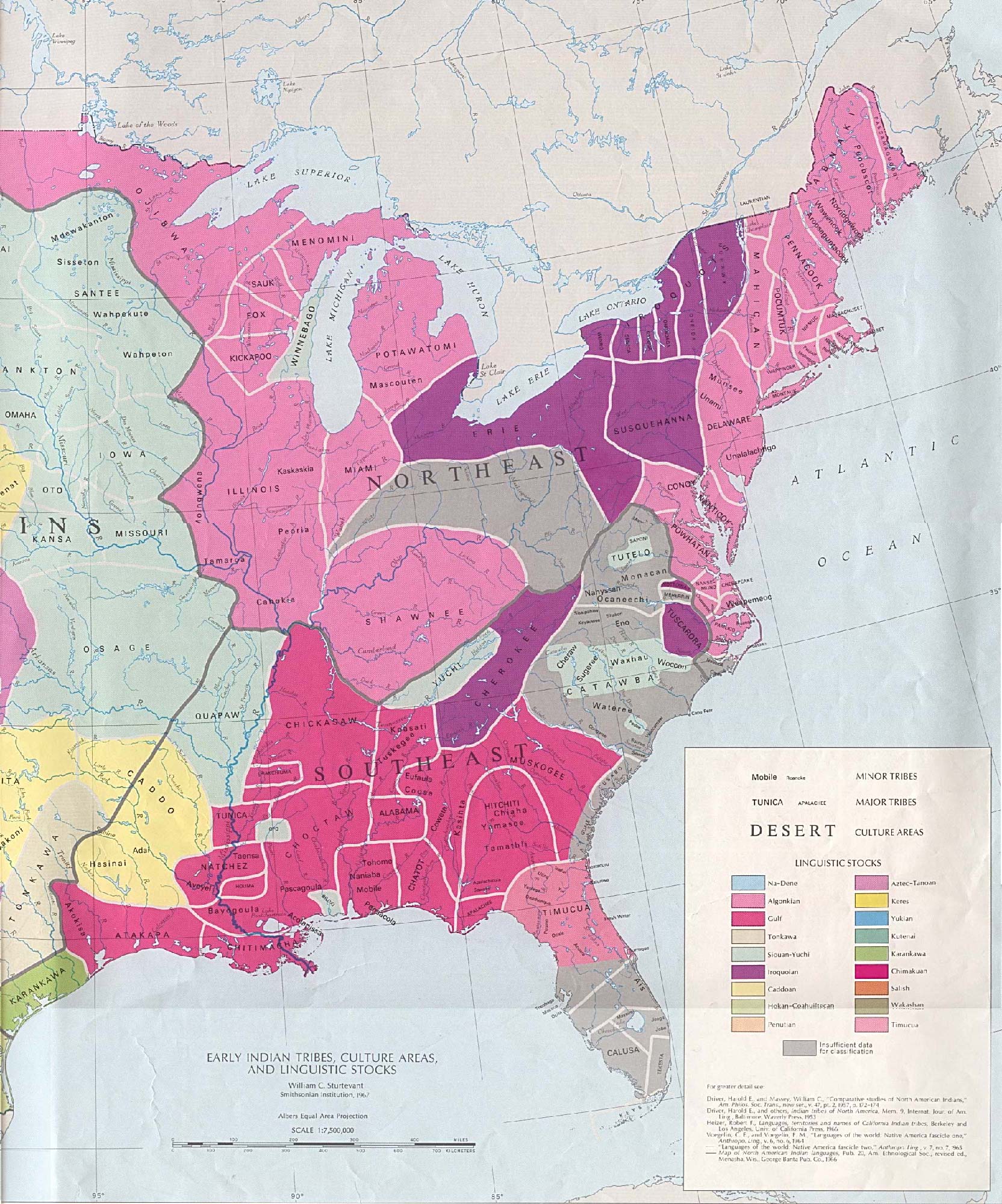Bacon's Rebellion began as a conflict between settlers of the Jamestown area and the native people of the region. During its course it deteriorated even further to a broader conflict between the classes, with the Indian people ancillary to the conflict.
Wikipedia Narrative
Beaver (Iroquois) Wars I (1535-1650) Indian against Indian
The history of this war chronicles the phenomenal rise of the Iroquois Confederacy during the "Beaver Wars" of the 17th century. In what were perhaps the greatest series of military victories in Native American history, the Five Nations of the Iroquois (the Mohawks, Oneidas, Onondagas, Cayugas, and Senecas) defeated, destroyed, and absorbed enemy tribes stretching over a vast area from eastern Canada to Virginia to Illinois--forever changing the cultural map of eastern North America. During this period, the Iroquois emerged as a dominant force that was both respected and dreaded by neighboring tribes and the European colonial powers alike. While the end result of these Iroquois wars was the famed Iroquois confederacy, the Beaver wars were actually waged over hunting grounds vital to a growing fur trade with Europeans. Most of the primary sources of information from this war come from Jesuit Priests who were living with the Iroquois.
Chronology
Ohio History
The Beaver Trade (from an Oneida Website)
Wikipedia
The Pequot War (1634-1638)

Most of the Pequot people, warriors or otherwise, were killed by the colonists and their allies, or captured and sold into slavery in Bermuda. Other survivors were dispersed. It would take the Pequot more than three and a half centuries to regain political and economic power in their traditional homeland region along the Pequot (present-day Thames) and Mystic rivers in what is now southeastern Connecticut.
Chronology
Roots of the conflict
Society of Colonial Wars
Beaver (Iroquois) Wars II (aka French and Indian Wars) (1650-1675)
Involved both Indian and French Settlers
The Beaver wars continue to foster the rise of the Iroquois Confederacy beginning with a series of victories won by the Iroquois over neighboring tribes following the defeat and collapse of their Huron enemies in 1650. Iroquois war parties fought wide-ranging campaigns against enemy tribes and Europeans alike in practically every state east of the Mississippi. In doing so, they destroyed or displaced dozens of tribes, many of which are known to history by their names alone.
Chronology
Hicksville Ohio Website History
From the Patriot Files
King Phillips War <1675-1677> This bitter conflict, pitting the New England colonies against the Narraganset and Wampanoag tribes, was fought from 1675-1677. The colonial militias suffered severe reverses before finally conquering Philip with the help of the Mohegans and other Indian allies.
The French & Indian Wars <175(4)6-1763> (In Canada The Seven Years War) was actually a series of wars between the colonial powers battling over portions of the American and Canadian frontiers. Native peoples were recruited as combatants by both sides. Note the important role that this war played in fostering a climate for the American Revolution.
A Summary of Conflicts between Native Indian People and European settlers/American Government. Wikipedia
